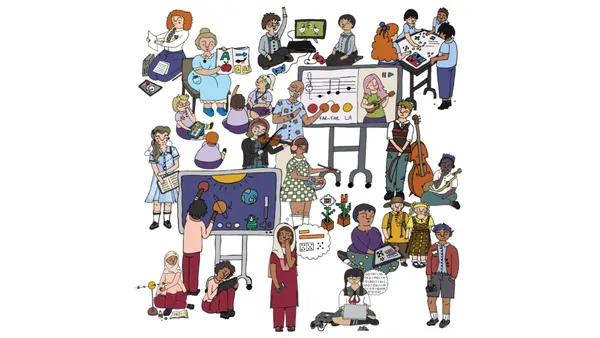Dive Brief:
-
Though 25% of American teens experience mental health issues, rural students and students of color are less likely to feel that they can reach out to a counselor or teacher for support, according to the ACT Center for Equity in Learning’s "Supporting the Mental Health Well-Being of High School Students" survey.
-
While 57% of white students report feeling supported by mental health experts at school, only 48% of African Americans do. Only 65% of rural students say they have access to a mental health professionals at school, compared to 71% of suburban students. To address this, ACT recommends schools promote the availability of existing mental health services and provide access to universal mental health screenings.
-
School counselors should receive ongoing professional development, ACT suggests. State and federal funding should be available for schools to improve mental health service offerings, but schools can also increase capacity of these professionals through community partnerships. States and districts can support the effort by providing competitive grant programs to evaluate program effectiveness.
Dive Insight:
Schools can supplement the lack of mental health providers by incorporating mental health education into instruction. Virginia is the first state in the country to pass legislation requiring K-12 mental health education in 9th and 10th grades.
Florida’s Department of Education also approved a program that works with Hope for Healing Florida. A 2017 survey indicated 28% of the state’s high-schoolers say they felt sad or hopeless for at least two consecutive weeks.
Among other states that have passed similar bills is Texas, where teacher preparation programs must include mental health training in the certification process.
Though mental health professionals may be difficult for rural students and students of color to access, teachers trained in mental health first aid can also act as first responders. Through training, educators can spot early signs of emotional distress and get students the help needed. Jefferson High School in Montana, which has one of the highest suicide rates in the country, launched a pilot program that trains students on reaching out to those they feel are troubled, as well.
Mental health days are another way districts can support students struggling with emotional burdens. Oregon is one of the first states to allow students to take mental health days in the same way they take sick days. Students lobbied for the measure in hopes it would change the stigma around mental health and seeking help. Mental health experts say it’s one of the first state laws to treat mental and physical health equally. The Oregon students were reportedly inspired by the youth movement in Florida after the Marjory Stoneman Douglas High School shooting in Parkland. Utah is credited as the first to pass a similar law.





 Dive Awards
Dive Awards







